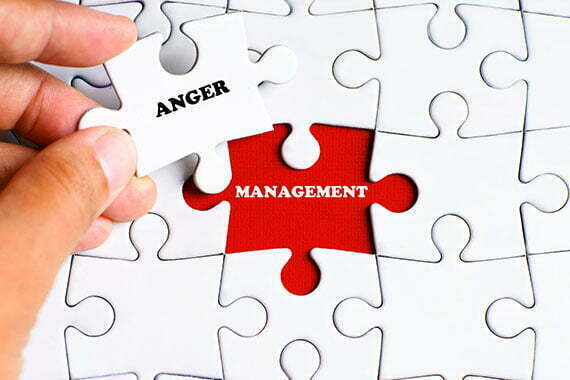
“Anybody can become angry — that is easy, but to be angry with the right person and to the right degree and at the right time and for the right purpose, and in the right way — that is not within everybody’s power and is not easy.” – Aristotle
Anger is a normal, natural human reaction and one of our core human emotions, alongside happiness, fear, sadness, and disgust – which are integral to our existence and survival.
Well-regulated anger can serve to protect us, motivate us, and mobilize us. But when out of control, it can be unpredictable, destructive and lead to a whole host of problems that may affect our work, relationships, and overall quality of life. If ‘bottled up’ and not expressed, it can also lead to an onset of longer-term issues such as depression and anxiety.
Tips on Managing Anger:
- Know What Your Triggers Are
When are you most likely to become angry? When stressed? When tired? When driving? Or with certain people? Being aware of the situations and circumstances that trigger your anger, can be a useful first step. Recognising your triggers ahead of time, can help you to anticipate and prepare for an alternative response, as it will give you a chance to think about how you want to react to a situation, rather than reacting in the heat of the moment. Keeping a mood log can help with this, by noting down your triggers, your thoughts, how you feel and your consequential reactions or behavioural response. Noting down these occurrences and the frequency of your anger may also help you to identify patterns, and the more you understand your anger, the easier it will be to choose how to manage it.
- Be Self-Aware & Monitor Your Anger Levels
Imagine or visualise that you have an internal ‘anger thermometer’ that you carry around with you. When you’re calm, your thermometer’s reading is at 0, but when you start to feel angry, it starts to rise, and your reading increases upwards to the top. When you’re reading reaches the very top of the thermometer, you ‘lose control’ and react to your anger and lash out (most typically by shouting, yelling, saying something you don’t mean or acting out physically). Akin to our other emotions, anger is accompanied by biological and physiological changes in the body (as a result of our innate ‘fight, flight or freeze’ response).
Therefore, some bodily changes you might notice when you’re angry can include a pounding heart, tensing of muscles, shaking, feeling hot and quickening of your breathing. Pay attention to these bodily changes and you can use them, as well as your anger thermometer reading as your cue to slow down and step away.
- Adopt Some Quick, Simple Ways to ‘Cool Down’
Once you’re more aware of what your warning signs are, you can implement a variety of ways to help you ‘cool down’ before allowing your anger to peak or spiral out of control. What might work for some, may not work for others, but the key is to acquire and arm yourself with a few different strategies to have ready ‘under your belt’, and to apply when needed.
For example, when your feelings of anger begin to peak, or you notice those physical changes in your body mentioned above…
- Stop, pause, take a deep breath, and make a conscious effort not to react automatically (as if on autopilot)
- Walk away, remove yourself from the situation, count to 20, 30, 40 or until you notice your emotions settle, or your body calming down
- Buy yourself time to think and try to pause and ask yourself, what am I reacting to?
i. What would be the consequences of responding angrily?
ii. What would be a better way of dealing with this?
iii. Am I reacting in the heat of the moment?
iv. Try to put yourself in the other person’s shoes - Try to visualise yourself dealing with the situation in a calm, non-aggressive, but assertive way, that allows you to get your points and opinions across, but still whilst respecting the rights and opinions of others.
- Make an active effort to ‘slow down’:
v. Speech – slow your speech down and try to speak in a slow and calm voice
vi. Breathing – take 3 or 4 long, slow, deep breaths through your nose, and breathe out as slowly and gently as you can
vii. Muscles – relax your body, drop your shoulders, loosen your arms and legs, unclench your fists and relax your jaw. - Find a safe and neutral way to exert and use up any pent-up energy that has accumulated as a result of your anger. For example, tearing up paper or hitting a pillow, or of course, many people turn to using various forms of exercise to release and ‘work off their anger’.
- Know The Difference Between Acting Assertively & Aggressively
When we believe that we have been treated unfairly, with disrespect, or feel under ‘threat’, an instinctive way to respond might be to act out aggressively. Aggression is a behavioural response that is intended to control a person or situation, or cause harm or injury, and involves expressing feelings and thoughts in a damaging, disrespectful way, that doesn’t consider the other person’s feelings, rights or opinions. This behaviour can include, verbal abuse, threats or acting out violently, as the individual’s reaction might be to want to fight back or retaliate. A more favourable way to respond however, is to act assertively. Assertiveness is an alternative behavioural response, which involves standing up for yourself and expressing your thoughts and feelings, but in a way that is respectful of the rights and opinions of the other person. By acting assertively, you are therefore still able to have your say, and can express your thoughts, feelings and beliefs, without the negative consequences associated with acting aggressively.
You don’t have to deal with anger alone
Sometimes we can all let anger get the better of us. If you feel you could benefit from a little support, talking to someone about how you’re feeling can be a good place to start. Cognitive Behavioural Therapy has been found to be an effective treatment for anger problems. If you are therefore interested in finding out more or would like to learn about assertiveness training, please contact us to arrange a free initial telephone consultation.
References:
Beck, R., & Fernandez, E. (1998). Cognitive-behavioral therapy in the treatment of anger: A meta-analysis. Cognitive therapy and research, 22(1), 63-74.
Bradbury, K. E., & Clarke, I. (2007). Cognitive behavioural therapy for anger management: effectiveness in adult mental health services. Behavioural and Cognitive Psychotherapy, 35(2), 201-208.
Fernandez, E., Malvaso, C., Day, A., & Guharajan, D. (2018). 21st century cognitive behavioural therapy for anger: A systematic review of research design, methodology and outcome. Behavioural and cognitive psychotherapy, 46(4), 385-404.
Saini, M. (2009). A meta-analysis of the psychological treatment of anger: Developing guidelines for evidence-based practice. Journal of the American Academy of Psychiatry and the Law Online, 37(4), 473-488.

